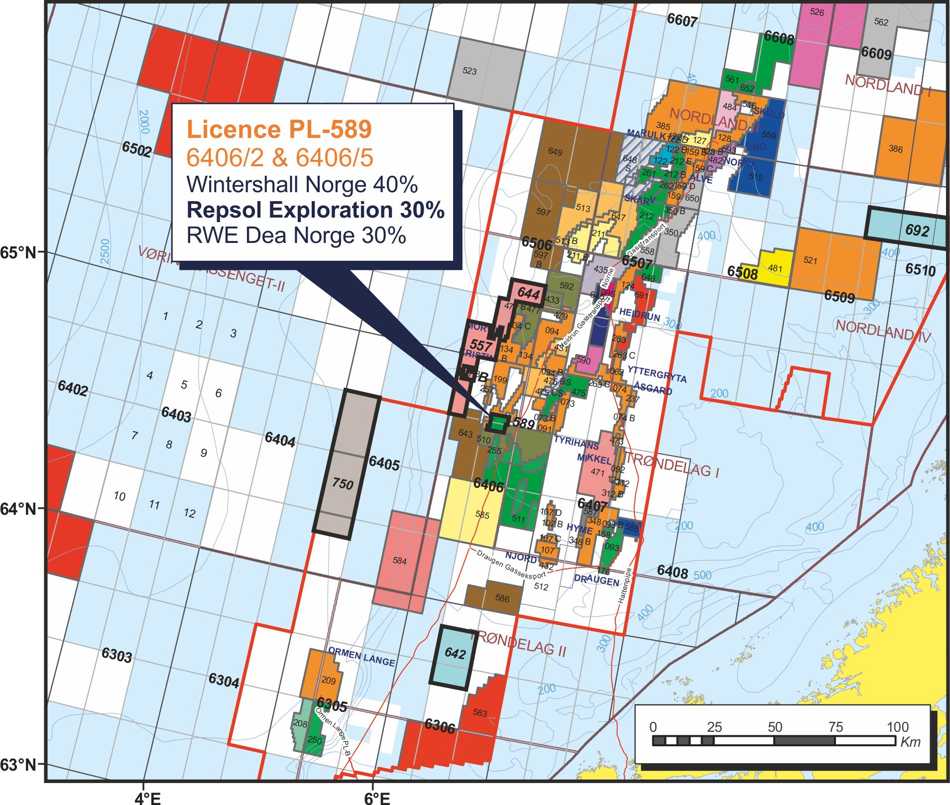Wintershall Norge AS, operator of production licence 589, has completed drilling of wildcat well 6406/2-8. The well proved oil
28 April 2015 - 18:21 CEST
The well was drilled about 20 kilometres south of the Kristin field in the Norwegian Sea and 190 kilometres northwest of Kristiansund. The objective of the well was to prove petroleum in Lower to Middle Jurassic reservoir rocks (Båt and Fangst groups).
The well encountered two oil columns over an approx. 130-metre interval in the Båt and Fangst groups in sandstone of generally poor reservoir quality.
Preliminary estimation of the size of the discovery is between one and eight million standard cubic metres (Sm3) of recoverable oil equivalents. The licensees will assess the discovery with regard to further follow-up. The well was not formation tested, but extensive data acquisition and sampling have taken place.
This is the first exploration well in production licence 589, which was awarded in APA 2010. The well was drilled to a vertical depth of 4655 metres below the sea surface, and was terminated in red sandstone layers in the Middle to Upper Triassic (“Red beds”). Water depth is 262 metres. The well will now be permanently plugged and abandoned.
Well 6406/2-8 was drilled by the Transocean Arctic drilling facility, which will now drill wildcat well 35/12-5 S in production licence 378 in the North Sea, where Wintershall Norge AS is the operator.
